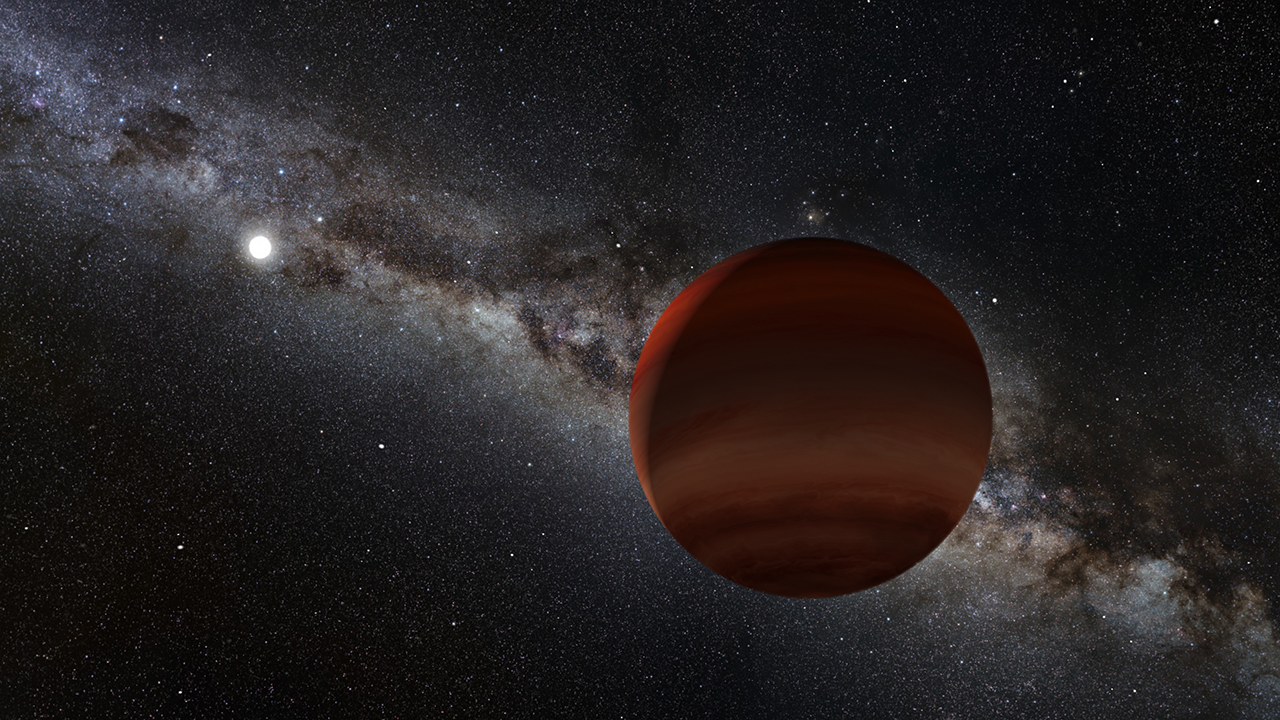Volunteers spot almost 100 cold brown dwarfs near our sun

Citizen scientists have spotted almost 100 of our sun's nearest neighbors.
In a new study, members of the public — including both professional scientists and volunteers — discovered 95 brown dwarfs (celestial objects too big to be considered planets and too small to be considered stars) near our sun through the NASA-funded citizen science project Backyard Worlds: Planet 9. They made this discovery with the help of astronomers using the National Science Foundations National Optical-Infrared Astronomy Research Laboratory.
"These cool worlds offer the opportunity for new insights into the formation and atmospheres of planets beyond the solar system," Aaron Meisner from the National Science Foundation's NOIRLab and the lead author of the new paper, said in a statement. "This collection of cool brown dwarfs also allows us to accurately estimate the number of free-floating worlds roaming interstellar space near the sun."
Related: Brown dwarfs: Strange failed stars of the universe explained (infographic)
"This paper is evidence that the solar neighborhood is still uncharted territory and citizen scientists are excellent astronomical cartographers," coauthor Jackie Faherty of the American Museum of Natural History in New York, said in a NASA statement. "Mapping the coldest brown dwarfs down to the lowest masses gives us key insights into the low-mass star-formation process while providing a target list for detailed studies of the atmospheres of Jupiter analogs."
Brown dwarfs are unusual celestial objects — much heavier than planets but not massive enough to become stars. The celestial objects can be seriously hot (think thousands of degrees Fahrenheit), but these 95 newly-discovered neighbors are surprisingly cool. Some of these weird worlds are even relatively close to Earth's temperature and could be cool enough to have water clouds in their atmospheres, according to the statement.
In 2014, scientists discovered the coldest-known brown dwarf, called WISE 0855, using data from NASA's WISE (Wide-field Infrared Survey Explorer) mission. This chilly brown dwarf is just about 10 degrees Fahrenheit (minus 23 degrees Celsius), much colder than any other discovered brown dwarf. Because of these temperatures, some have even suspected that the brown dwarf might actually be an exoplanet.
Get the Space.com Newsletter
Breaking space news, the latest updates on rocket launches, skywatching events and more!
So, with these new discoveries, researchers hope that they may learn a bit more about why these brown dwarfs are so cold, or whether they're really brown dwarfs at all.
"Our new discoveries help connect the dots between 0855 and the other known brown dwarfs," NASA Goddard astrophysicist Marc Kuchner, the principal investigator of Backyard Worlds and the citizen science officer for NASA's Science Mission Directorate, said in the same statement.
Backyard Worlds: Planet 9, which is hosted on the citizen-science platform Zooniverse, uses data from NASA's Near-Earth Object Wide-Field Infrared Survey Explorer (NEOWISE) satellite between 2010 and 2011 and all-sky observations collected by the same satellite under its previous name WISE.
"These Backyard Worlds discoveries show that members of the public can play an important role in reshaping our scientific understanding of our solar neighborhood," Meisner said in the same NASA statement.
The results of this study will be published in the Astrophysical Journal.
Email Chelsea Gohd at cgohd@space.com or follow her on Twitter @chelsea_gohd. Follow us on Twitter @Spacedotcom and on Facebook.
Join our Space Forums to keep talking space on the latest missions, night sky and more! And if you have a news tip, correction or comment, let us know at: community@space.com.

Chelsea “Foxanne” Gohd joined Space.com in 2018 and is now a Senior Writer, writing about everything from climate change to planetary science and human spaceflight in both articles and on-camera in videos. With a degree in Public Health and biological sciences, Chelsea has written and worked for institutions including the American Museum of Natural History, Scientific American, Discover Magazine Blog, Astronomy Magazine and Live Science. When not writing, editing or filming something space-y, Chelsea "Foxanne" Gohd is writing music and performing as Foxanne, even launching a song to space in 2021 with Inspiration4. You can follow her on Twitter @chelsea_gohd and @foxannemusic.
-
rod The statement paper link says this "To help find our Sun’s coldest and nearest neighbors, the astronomers of the Backyard Worlds project turned to a worldwide network of more than 100,000 citizen scientists . These volunteers diligently inspect trillions of pixels of telescope images to identify the subtle movements of brown dwarfs and planets. Despite the abilities of machine learning and supercomputers, there’s no substitute for the human eye when it comes to scouring telescope images for moving objects."Reply
This is astrometry via the ouch method, very painstaking :) Here is the arxiv paper and abstract link, https://arxiv.org/abs/2008.06396
Much astrometric study went into this. Here is an example, "...plus a candidate late T companion to the white dwarf LSR J0002+6357 at 5.5' projected separation (~8,700 AU if associated)."
The angular size and projected separation is based upon a distance ~ 26 to 27 pc from Earth.









